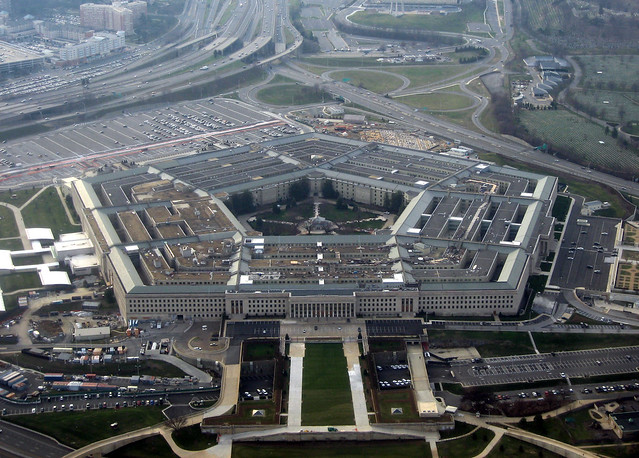 IImage Credit: David Gleason / Flickr httpscreativecommons.orglicensesby-sa2.0.j
IImage Credit: David Gleason / Flickr httpscreativecommons.orglicensesby-sa2.0.j
Budget Concerns and Non-Traditional Threats: COVID’s Long-Term Effect on the Military
COVID-19 has already affected the military in a myriad of temporary ways – from recruiting methods to a reduction in travel. However, the current situation will also have long-term effects as Americans begin to perceive more non-traditional threats as a priority. In order to meet a broadened definition of national security, it will be necessary to reassess the military’s role in the U.S.’s security and redistribute future Department of Defense budgets accordingly.
Defense Budget
Because the length and future severity of the pandemic itself is uncertain, it is too early to calculate what the eventual total cost or full toll on the U.S.’ economy might be. However, at this stage the U.S.’ 2020 deficit has already reached $3.7 trillion. As the U.S. begins to look for ways to cut costs, it is widely expected that the military will be subjected to budget cuts. If this does occur, the way in which the budget cuts are carried out will make a vital difference in the military’s current and future readiness.
The DOD underwent and failed its first full financial audit in 2018, followed by a second failed audit in November 2019. This was expected, as explained by the DOD, since the first few years of auditing serve as a time to establish a baseline from which to learn and improve. The data from these audits, particularly the last one, should be utilized as the DOD seeks to make informed decisions in the face of budget cuts.
Above all, it will be vital to avoid sequestration – automatic and arbitrary budget cuts that reduce appropriations uniformly across the government. When sequestration does occur, such as in 2013, the budget cuts are taken equally from each area within the DOD, with no reference to the level of importance of that area to the nation’s security. If the budget cuts are simply taken across-the-board, without evaluating whether those areas are essential, the military’s readiness will be negatively impacted.
Prior to budget cuts, it will be important to define the U.S.’ national security priorities. Identifying what is most relevant to U.S. security will help ensure that the budget cuts will be implemented without a major loss of readiness on vital points. In the 2018 National Defense Strategy, great power competition is plainly the highest priority. However, the next National Defense Strategy may not appear as single-minded.
The Evolving Definition of National Security
Events throughout the U.S.’ history have periodically changed what constitutes a serious threat to national security. For example, following the 9/11 attacks, focusing on non-state actors became far more important to U.S. national security. Because of COVID-19, the ways in which Americans think about national security have begun to shift again. The pandemic has raised awareness about security risks that aren’t stopped by borders and can’t be fought by conventional military weapons.
While the U.S. has the largest conventional military force, with a defense budget that far exceeds that of any other country, it is not adequately prepared to face growing non-traditional threats that can strike closer to home. Traditional threats and great power competition will continue, but threats such as future pandemics, manmade or natural disasters, and cyber-attacks will become increasingly more important to Americans. As the magnitude and frequency of these non-traditional threats continue to increase, the U.S. should reconsider how best to utilize the military to increase national security.
Following 9/11, the fundamental understanding of national security shifted, but military structure and budgeting did not change adequately to reflect this new reality. As COVID-19 begins to change the way Americans view national security, it is time to redefine what the nation’s priorities are, how the military should be restructured to best achieve those priorities, and how the budget can be reworked to emphasize this focus.
Conclusion
The post-pandemic world will differ widely from the pre-pandemic one. As the ways in which Americans view national security begin to shift, seeking security from threats more likely to affect them individually, the capabilities and objectives of the military should change as well. Careful consideration and mindful budgeting of the DOD, or other agencies better equipped for these specific threats, can ensure that the U.S. is prepared to meet the non-traditional security threats it faces. Tailoring the budget and redistributing resources to reflect these prevalent threats will best ensure that the military will be effective in meeting future national security needs.





